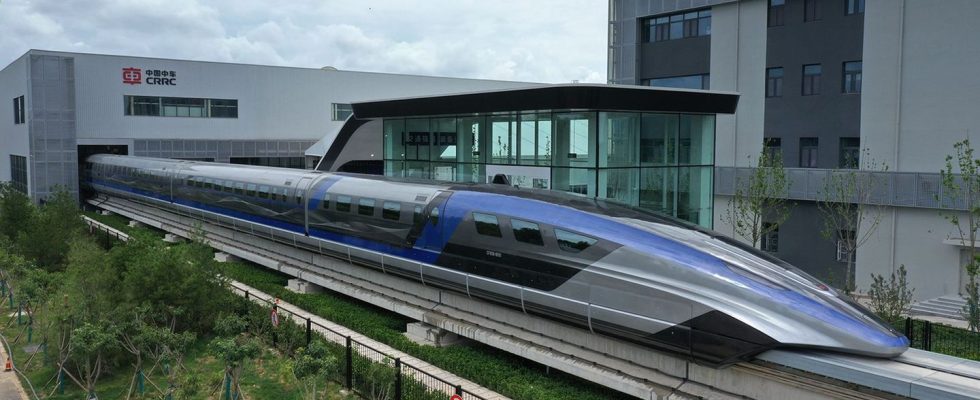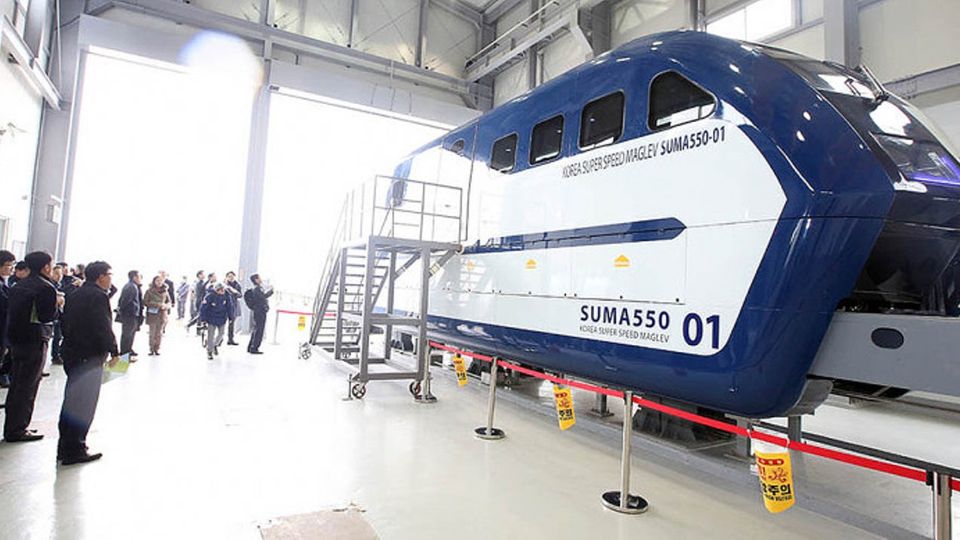Railway revolution?
Trains faster than jets – China puts the first vacuum tube into operation
This Chinese magnetic levitation train is already in production, the model for the vacuum tube is still in the experimental state
© Getty Images
Floating trains are supposed to reach 1,000 km/h in an airless tube. The test track for China’s “Hyperloop” begins operations. This system could replace air transport.
China wants to get away from rail
Technically speaking, conventional trains currently run over China’s high-speed network, like the ICE, the wheels roll over two tracks. In addition to the metal tracks, routes for magnetic levitation trains – Maglev – are to be set up. Maglev connections already exist in the country, but so far there is no network for long-distance connections. Magnetic levitation technology makes trains even faster than before; there is no friction between the track and the wheels. But another force limits the rush of speed: air resistance.
It grows quadratically in relation to speed. If the speed doubles, the resistance quadruples. Streamlined designs can reduce drag somewhat, but in the end speed wins. It defines the limit up to which economic operation is possible. Technically you can go even further for record runs, but in everyday life the energy costs would be too high.
No air – no resistance
The problem has been known for a long time and so has the appropriate solution: If you let the air out, there is no air resistance. This becomes possible if the train travels through a tube in which there is an almost vacuum. In the West, the topic became known under the keyword “Hyperloop”. Elon Musk’s PR machine gave the impression that only Musk’s system existed. The “Hyperloop” has now been discontinued, but in China and South Korea people are working hard on the super-fast trains
Last year, the first test track in China was completed in the city of Datong in the northern Chinese province of Shanxi. The tube has two special features. On the one hand, it is airtight and creates an almost vacuum inside. The second innovation is even more important. The effect of superconductivity is used to create the electric magnetic cushion. Superconductivity means that the resistance of the conductors drops to practically zero. This effect has also been known for a long time; superconductivity occurs at temperatures close to absolute zero. The Chinese must now have succeeded in using superconductivity for large industrial applications. This means they have to use a material that is available in large quantities and for which the desired effect occurs at much warmer temperatures.
6 pictures
The entire test route is currently only two kilometers long. The prototype is currently traveling through the tube at 130 km/h in order to test the systems. It is a joint project of the North University of China and the Research Institute of China Aerospace Science and Industry Corp. The test route is to be expanded to 60 kilometers in three phases. The trains should then reach a maximum speed of 1,000 km/h.
Costs of the complex route
The high-speed trains in China currently travel at 350 km/h. A vacuum tube train would be faster than a passenger plane on any route. Not only does it have a higher cruising speed. Boarding, taking off and stopping would be easier and faster than with an airplane. A train station can be located in the middle of the city, eliminating the need to travel to the airport. It remains to be seen whether such systems will become established. Not everything that is possible in experiments is also suitable for practice. The advantages of the system are also its disadvantages. Compared to a conventional rail, the Maglev vacuum tube would be a high-tech system of enormous size. Manufacturing, maintenance and operating costs are likely to be much higher than with conventional railways.
Source: Global Times, SCMP



